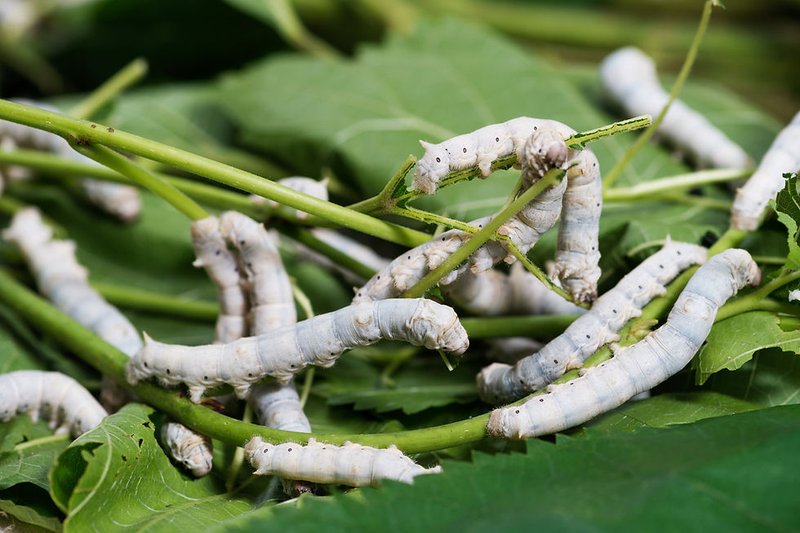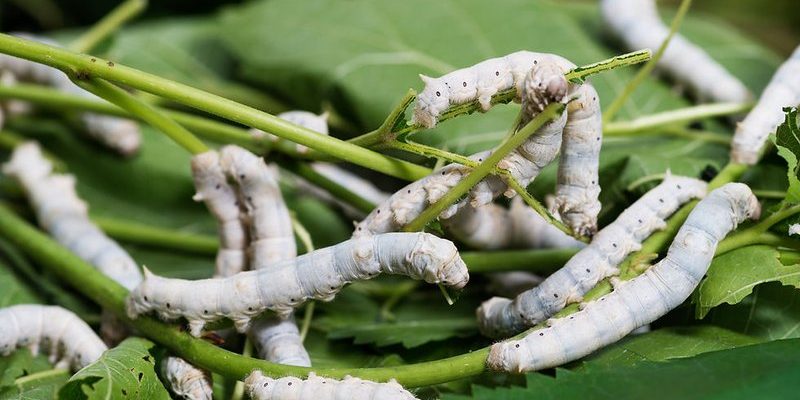
Let’s chat about why using silkworms in controlled insect farming systems is important and how they can fit into our farming future. Think of them as tiny farming champions—offering benefits far beyond their silk. They can help in waste reduction, feed production, and even support local economies. Here’s the thing: by integrating silkworms into our farming practices, we can create a more sustainable and efficient food system. So, let’s dive into this intriguing world of silkworm farming!
What Are Silkworms and Their Role in Farming?
Silkworms, or *Bombyx mori*, are the larvae of the silk moth and are known primarily for producing silk. However, their farming potential extends well beyond just silk. You might be wondering how these small insects can contribute to larger agricultural systems. Well, silkworms are often raised in controlled environments, making them perfect for urban farming or small-scale agriculture.
In a controlled insect farming system, silkworms can be raised efficiently, allowing farmers to manage their resources effectively. These insects are primarily fed mulberry leaves, which are easy to grow and maintain. The ability to raise them in compact spaces, combined with their rapid growth cycle, makes them an ideal choice for those looking to experiment with insect farming.
Furthermore, silkworms can be used in waste management. They can consume organic waste—from vegetable scraps to agricultural byproducts—turning it into valuable biomass. This process not only reduces waste but also creates a nutrient-rich feed for livestock or even for human consumption. It’s like turning trash into treasure!
The Benefits of Silkworm Farming
You might be surprised to learn that silkworm farming offers several benefits, especially in a controlled environment. First and foremost, they are a fantastic food source. Silkworms are high in protein and are packed with essential amino acids, making them a nutrient-dense food option. This could be a game-changer for countries facing food security issues.
Moreover, silkworms grow quickly, typically reaching maturity in about 6 weeks. This rapid lifecycle allows for multiple harvests throughout the year, thus maximizing productivity. Farmers can harvest not only the silk but also the larvae, which can be sold as feed or consumed directly.
Let’s not forget about sustainability. Raising silkworms requires significantly less water than traditional livestock farming. They also produce fewer greenhouse gases, making them an eco-friendly choice in today’s increasingly environmentally conscious world. So, if you’re thinking about going green in your farming practices, this could be a stellar option.
Creating a Controlled Environment for Silkworms
Setting up a controlled environment for silkworm farming is key to success. Here’s the thing: these little creatures thrive in specific conditions, so creating the right environment is crucial. Ideally, silkworms need a temperature around 25°C (77°F) and a humidity level between 60-70%.
It’s best to use well-ventilated spaces to prevent overheating and allow fresh air circulation. You can use materials like mesh or fine screens to keep pests out while letting air flow freely. Lighting is another important factor; silkworms prefer dim light, so consider using soft, diffused lighting to keep them comfortable.
Feeding is also part of the equation. Silkworms require a steady supply of fresh mulberry leaves. If you’re thinking about starting your own silkworm farm, consider planting mulberry trees nearby or sourcing leaves from local farms to keep your silkworms happy and well-fed.
Challenges in Silkworm Farming
While silkworm farming offers great potential, there are some challenges to consider. One major hurdle is the risk of diseases. Silkworms can be susceptible to various pathogens, which can wipe out a whole batch if not managed properly. Regular monitoring and maintaining proper hygiene in your farming area are crucial to prevent outbreaks.
Another challenge is the initial investment in setting up a controlled environment. Equipment like heating, cooling, and humidity control systems can be pricey. However, it’s essential to think of it as an investment in the future of your farming practice.
Moreover, finding a reliable market for your silkworm products—whether that’s silk, larvae, or the waste they produce—can be tricky. You might consider collaborating with local markets or other farmers to create a network that maximizes your output and market reach.
Silkworms as a Protein Source
Silkworms are emerging as an alternative protein source, and it’s worth exploring their potential in today’s food landscape. As the global population continues to rise, traditional protein sources like beef and chicken may not be able to keep up with demand. Here’s where silkworms come in—they’re a sustainable option that can address protein shortages in many regions.
In addition to their protein content, silkworms are low in fat and rich in vitamins and minerals. They can be incorporated into a variety of dishes, from snacks to more elaborate meals. In many cultures, fried or roasted silkworms are considered a delicacy.
If you’ve never tried them before, you might be surprised at how tasty they can be! And with their lower environmental impact compared to conventional livestock, they could play a significant role in reshaping our diets for the better.
How To Start Your Own Silkworm Farm
If you’re inspired to start your own silkworm farm, here’s a step-by-step guide to get you started:
- Research: Learn about silkworms, their lifecycle, and their needs. Knowing your stuff can save you time and trouble.
- Prepare the Environment: Set up a controlled area with proper temperature, humidity, and ventilation.
- Source Mulberry Leaves: Grow your own or find a consistent supplier to keep your silkworms fed.
- Acquire Silkworm Eggs: Purchase high-quality silkworm eggs from a reputable source and follow best practices for hatching.
- Monitor and Maintain: Keep a close eye on your silkworms, checking for signs of disease or stress, and adjust conditions as necessary.
Starting a silkworm farm is like embarking on a new adventure. You’ll face challenges, of course, but with careful planning and dedication, it can be a rewarding endeavor.
In summary, using silkworms in controlled insect farming systems opens up a world of possibilities. Not only do they offer sustainable protein options, but they also provide opportunities for reducing waste and supporting local economies. With a little dedication and the right environment, you can tap into this fascinating practice.
By integrating silkworms into your farming approach, you’re not just growing insects; you’re contributing to a more sustainable and resilient food system. So, if you ever thought about venturing into insect farming, silkworms might just be the perfect starting point!

